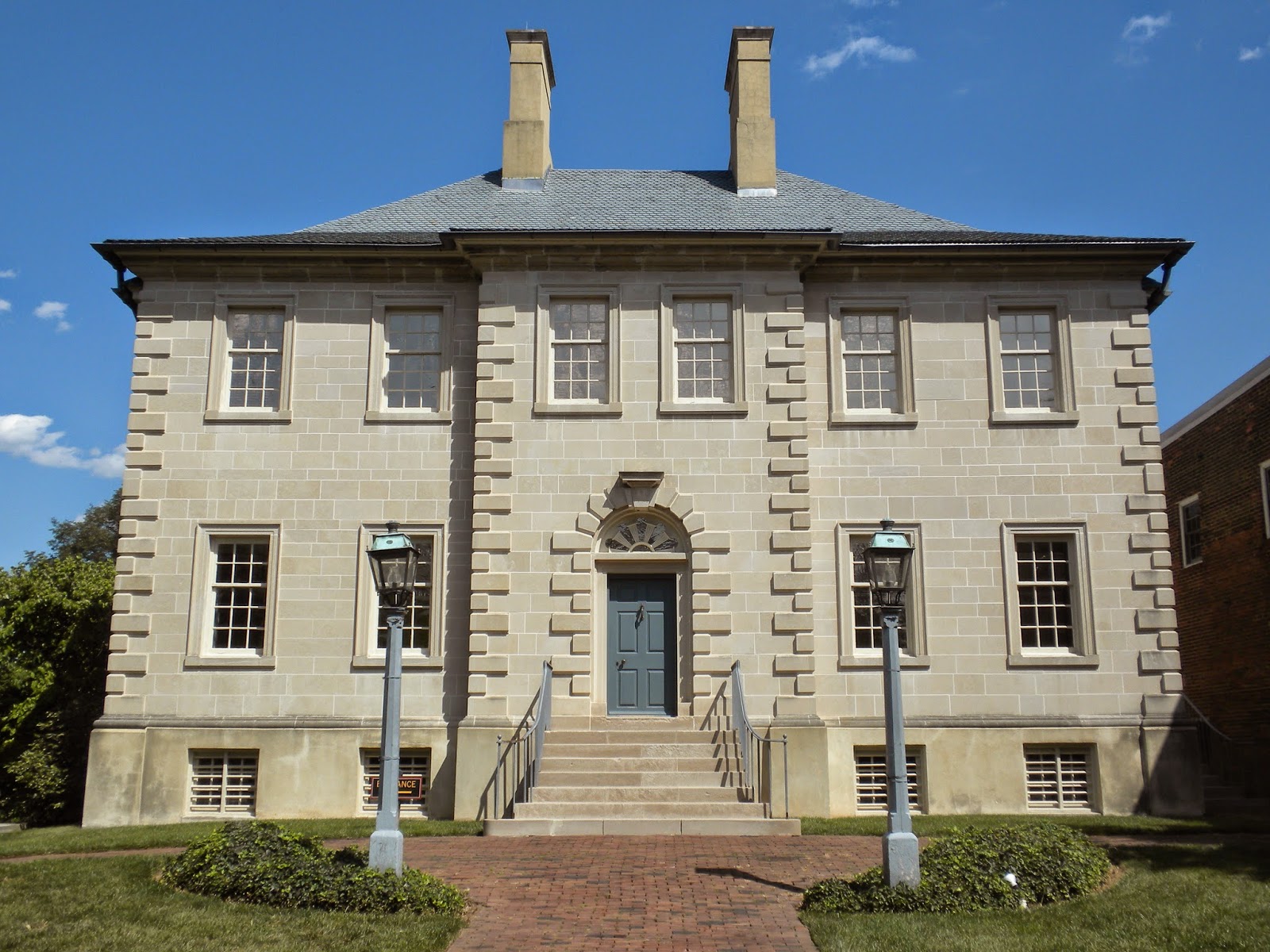During our recent trip to Alexandria, VA, a town full of rich US culture and fun, one of the historical tours we took advantage of was the Carlyle House Museum (1753). This Georgian Palladian manor house was established in 1753 by John Carlyle, a Scottish merchant. If you want a glimpse into Revolutionary Era elegance in both home and garden, this tour is for you!
Carlyle House
The Carlyle House is a fine example of what happens when an 18th century merchant agent settles in the Virginia Colony of North America, marries a resident rich man's daughter (Sarah Fairfax), and capitalizes on his assets (both land and servant purchases) in the new land of opportunity. Those calculated moves by John Carlyle resulted in building the most stately manor home in the most prime of locations in what would become the future United States.
The Carlyle House was the first home built of stone, in a time when homes were only made of wood.
Carlyle House
The Carlyle House is a fine example of what happens when an 18th century merchant agent settles in the Virginia Colony of North America, marries a resident rich man's daughter (Sarah Fairfax), and capitalizes on his assets (both land and servant purchases) in the new land of opportunity. Those calculated moves by John Carlyle resulted in building the most stately manor home in the most prime of locations in what would become the future United States.
 |
| Carlyle House front entry, viewed from outside and inside |
John Carlyle honored his family from Scotland throughout the building of both his life and home in the new colony. Letters sent were discovered in a country home in Scotland nearly 250 years after the home was built (now in the possession of the Virginia Historical Society). John's wife, Sarah Fairfax Carlyle, gave birth to their first child, a son (William Carlyle), on the eve of their move into the grand home in August, 1753.
John was politically connected, and appointed major and commissary to the Virginia military forces during the French-Indian War (1754-1763). During this time, British Major-General Edward Braddock made the Carlyle House his headquarters. The Congress of Alexandria (the five established British colonies in North America) convened at the Carlyle House, headed by Braddock. George Washington, as a personal assistant to Braddock's field operations, was among those present.
While John acquired much prestige and wealth, he also suffered much tragedy, including the death of his first wife, and 7 of his 10 children. John Carlyle died in 1780 after a debilitating nervous breakdown and stressful career as military store keeper.
In 1781, Carlyle House was inherited by John Carlyle's grandson (John Carlyle Herbert) through his daughter Sarah Carlyle Herbert. When Sarah died in 1827, the house passed from the family's possession.
During the mid 19th century, the Carlyle House began its demise, as the Mansion House Hotel was built on Fairfax Street, completely blocking the view of the Carlyle House from the street. During the Civil War, both were seized by Union forces.
The Carlyle House is located at 121 N. Fairfax Street, Alexandria, VA 22314 (Phone: 703.549.2997). The museum tour does have a published schedule and entry fee, but there is quite a savings if you purchase a museum pass for $10 if you visit Alexandria and plan on at least two of the nine (9) historic sites in the city. More information can be found on the link provided.
I was not compensated for writing this post; however, I did win a trip (via random drawing) to the town from The Alexandria Convention & Visitors Association, which included a "Key to the City" museum passes. All opinions and photos are my own.
Related posts:
Stabler-Leadbeater Apothecary Museum - Alexandria
Visiting Old Town Alexandria - on the town!
Treasures from the Trip to Alexandria
Sharing:
John's only living son, George William, inherited the house at the young age of 14. Sadly, he lost his life one year later (1781) in a Revolutionary battle in present-day South Carolina.
 |
| George William Carlyle's bedroom, with artifacts relevant to a young man's position at the time: bed, desk, dressing table, and facsimile of uniform worn in Revolutionary War. |
 |
| Servants' importance: servants assisted in maintaining the home and its residents in everything from home construction and repair, cooking, serving, cleaning & laundering, dressing and mending. |
 |
| Architectural study: original glass, stone, keystone, wood, brick, plaster,and glass - preserved remnants of the Carlyle House original construction |
 |
| Carlyle House: (L, prior to restoration; R; 2014) |
I was not compensated for writing this post; however, I did win a trip (via random drawing) to the town from The Alexandria Convention & Visitors Association, which included a "Key to the City" museum passes. All opinions and photos are my own.
Related posts:
Stabler-Leadbeater Apothecary Museum - Alexandria
Visiting Old Town Alexandria - on the town!
Treasures from the Trip to Alexandria
Sharing:








No comments:
Post a Comment